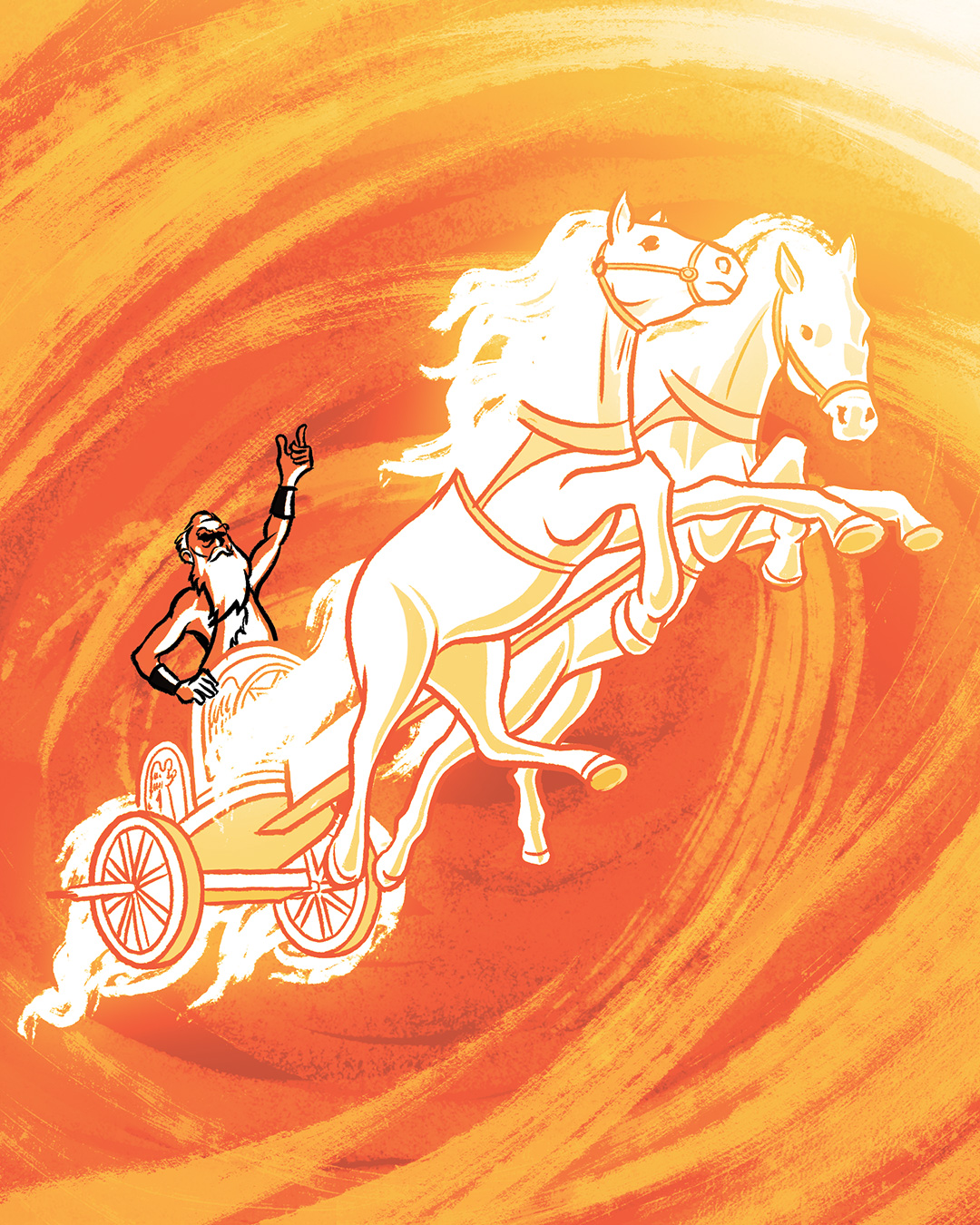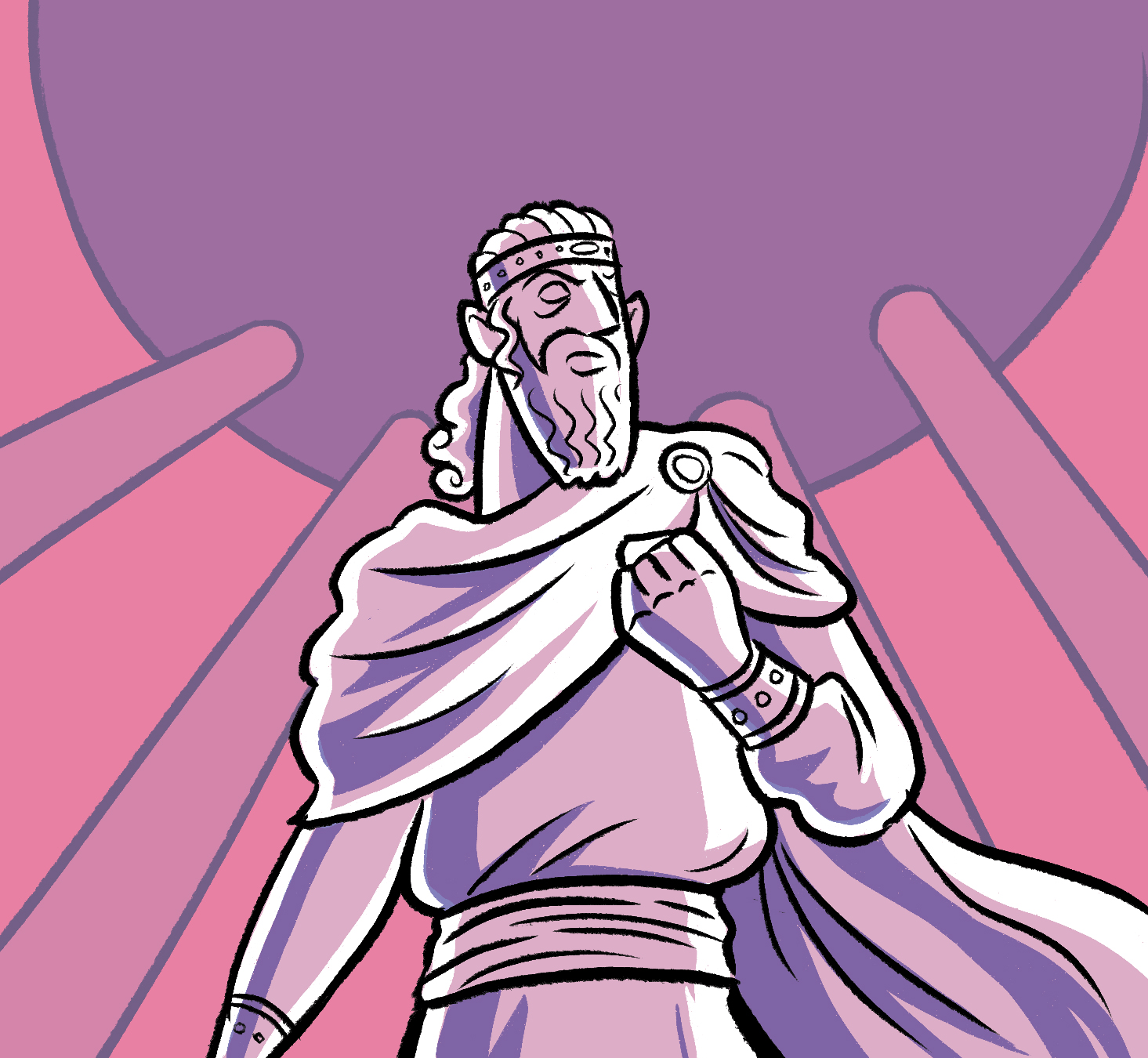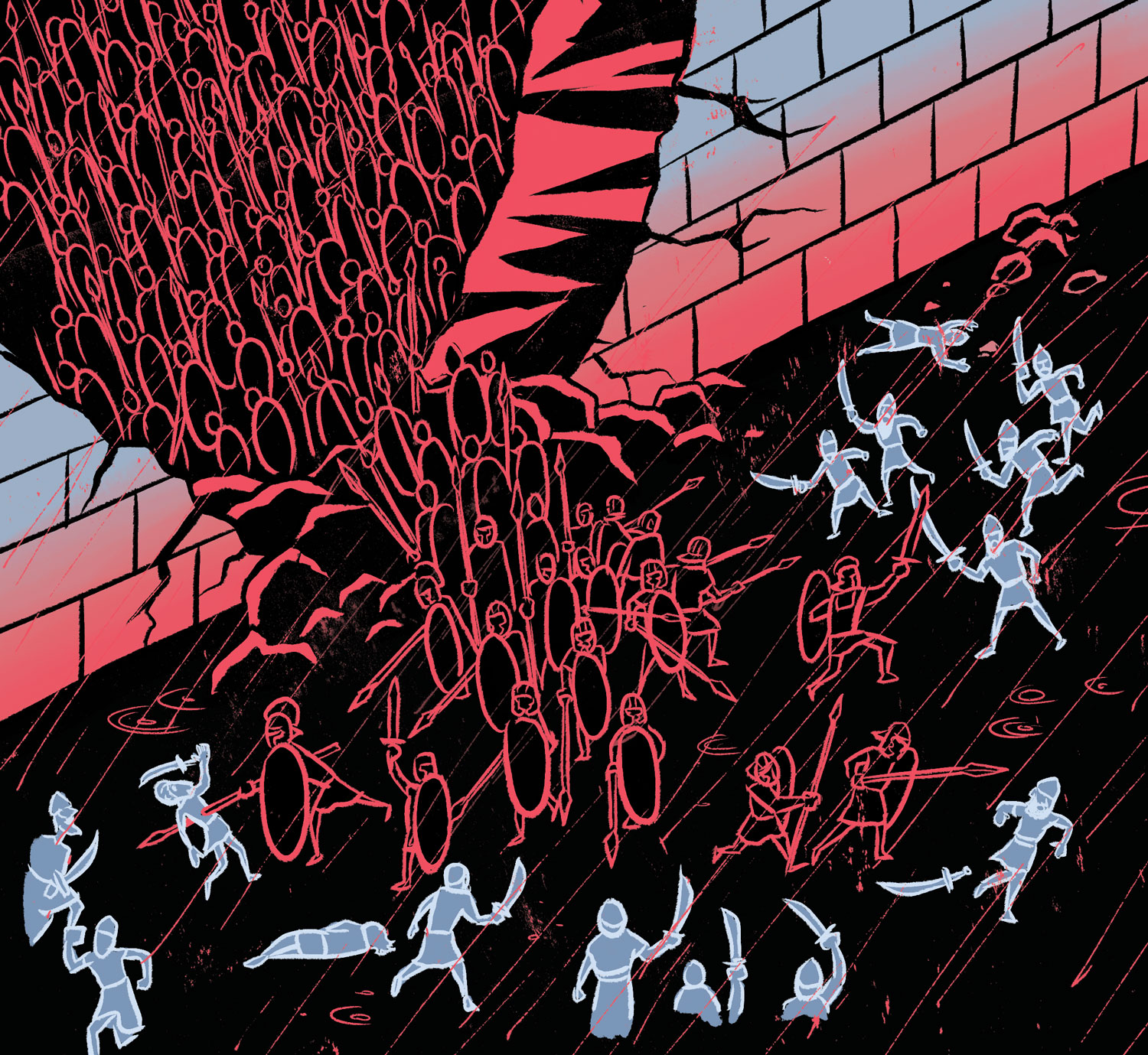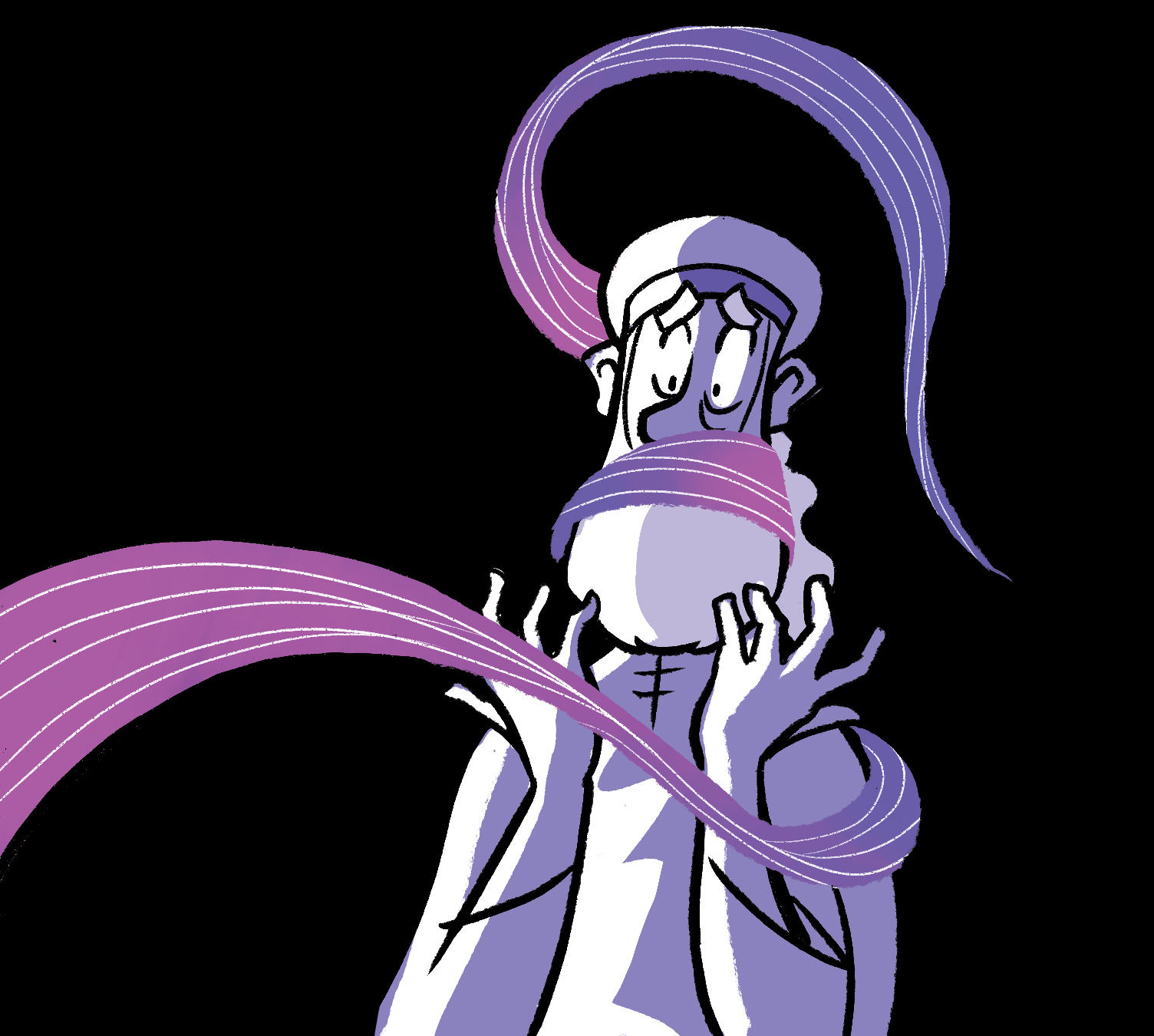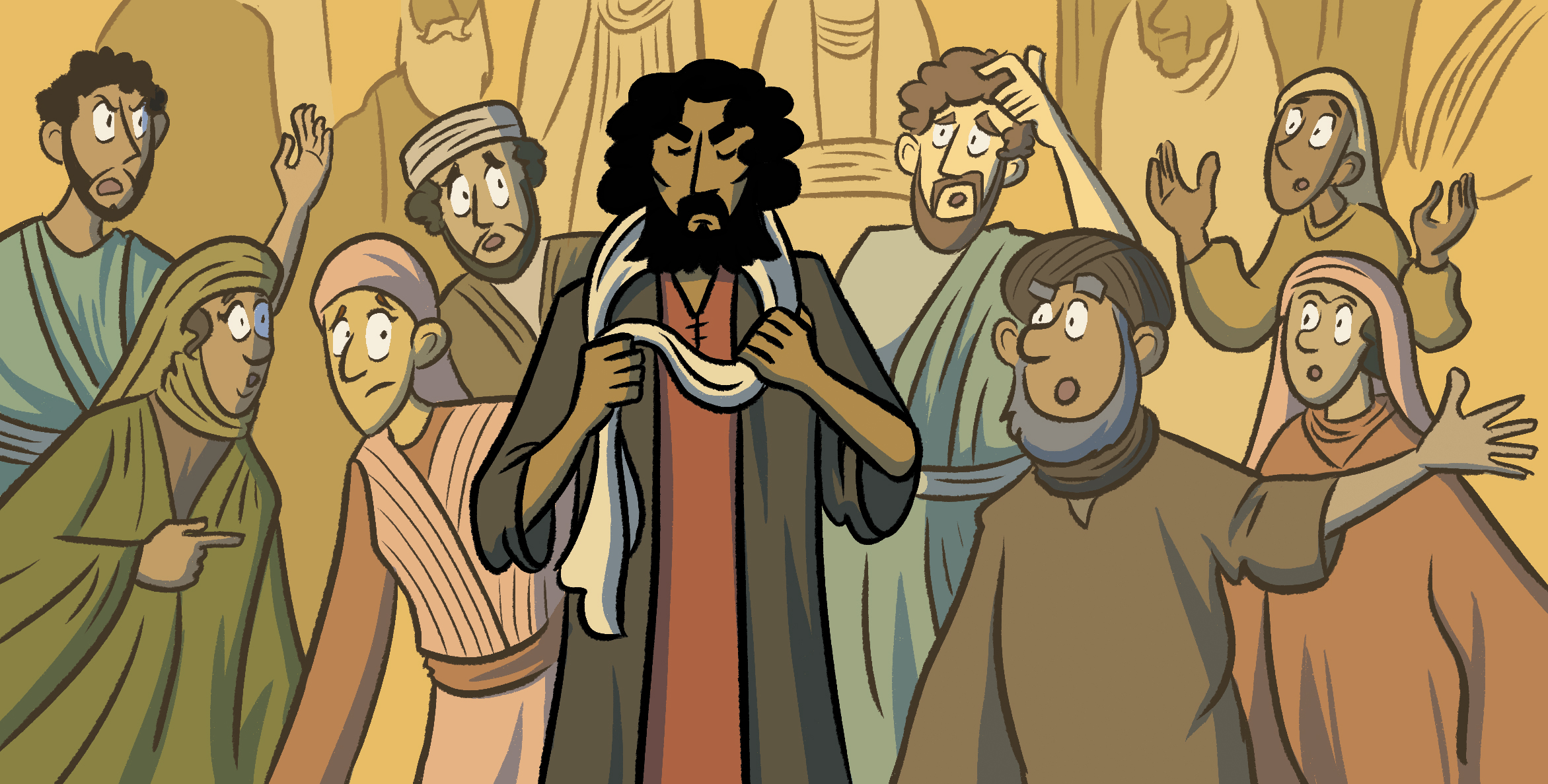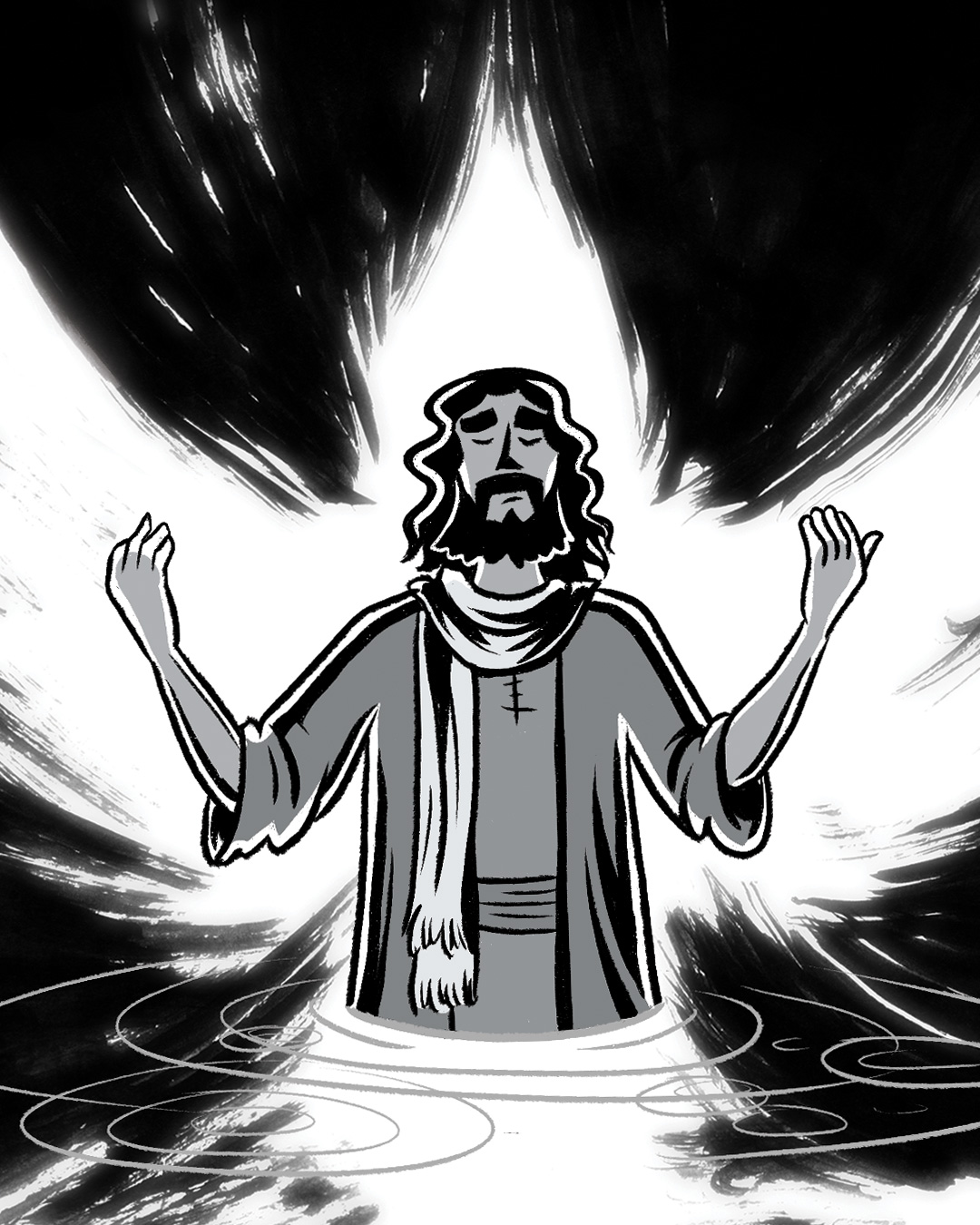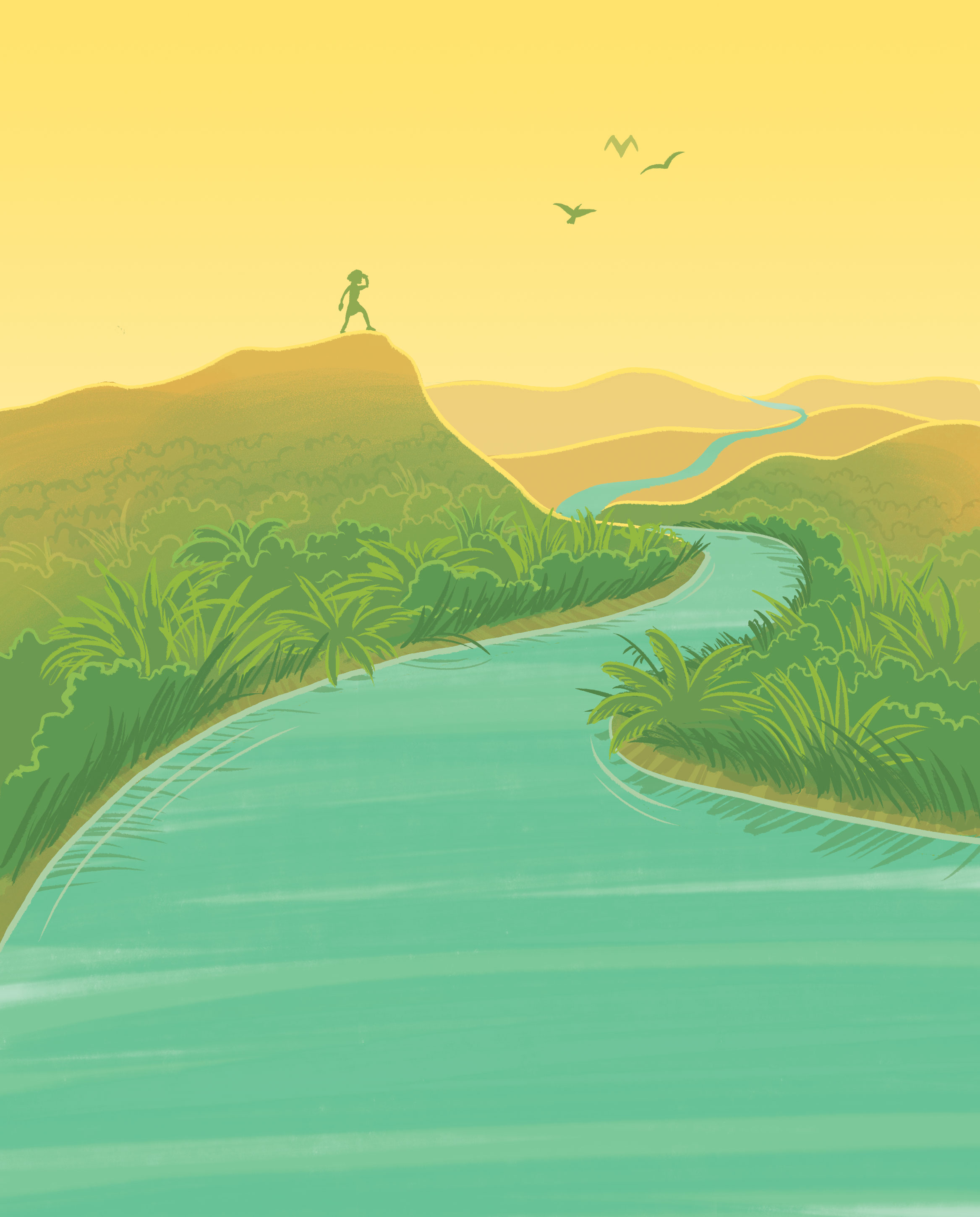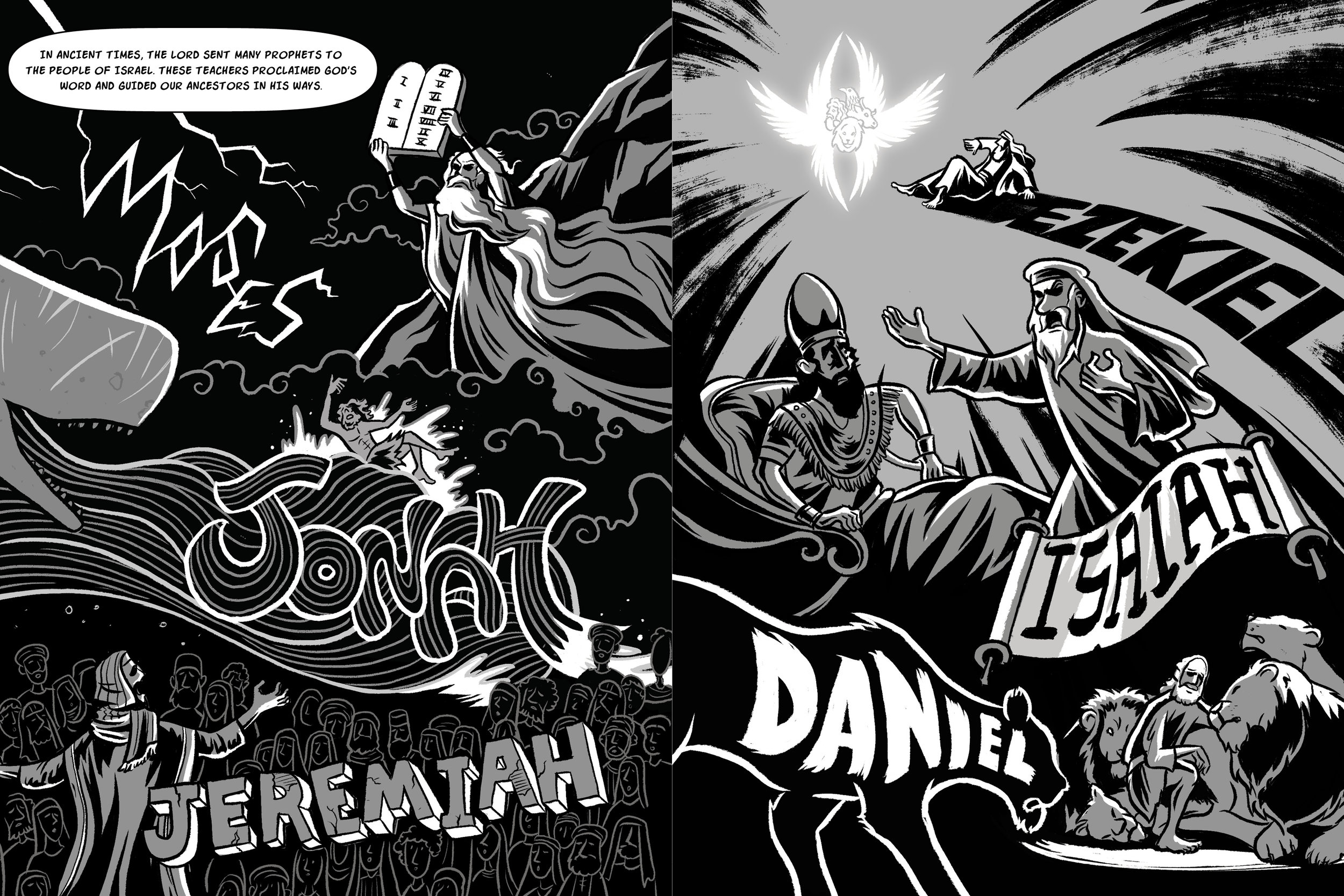Saint John the Baptist: A Voice Crying Out in the Desert
Graphic novel, 6x8"
Ink, digital art
Saint John the Baptist: A Voice Crying Out in the Desert tells the story of the life of John the Baptist and his role in the Christian tradition. As a Catholic and a storyteller, I am inspired by the Bible’s dramatic plots, various settings, and intriguing characters. When I first undertook this project, I found that the story of John the Baptist promised a particularly interesting challenge: John’s story is not told as a continuous narrative in the Bible, but instead, it is fragmented and non-chronological. My goal in writing and illustrating this graphic novel was to make John the Baptist's somewhat confusing story more cohesive. I hope that Saint John the Baptist: A Voice Crying Out in the Desert brings the story of John the Baptist to life in an entirely new and unexpected way that young Christian readers will find exciting, engaging, and accessible.
This book is published by Pauline Books & Media (2019) and is available to buy at the Pauline Store, Amazon.com, Barnes & Noble, and more.
Process
Saint John the Baptist: A Voice Crying Out in the Desert started off as a project for a college illustration course. The goal was to create a series of illustrations based on an existing story. I felt that a Biblical story would be a perfect place to start since the dramatic and miraculous elements could inspire exciting artwork; at the same time, the morals and teachings of Scripture provided a deeper meaning behind the drawings. I was drawn to the story of John the Baptist in particular because there seemed to be so much potential to create a visually and narratively fascinating graphic novel, yet no such book had ever been made (to my knowledge). I also found myself wanting to understand John’s life and significance better, and I was excited to delve deeper into his story.
The first version of the book was called The Voice in the Desert and contained about 60 pages of content. After Pauline Books and Media agreed to publish the book, I began the process of rewriting it to include more content and to refine the script. With the help of the editors at Pauline, I drafted a manuscript containing the revised dialogue, narration, and descriptions of actions and scene transitions. Once the manuscript was close to finalized, I created a dummy—a draft of the book containing rough sketches to get a sense of how the images would work with the text and how the story would flow from panel-to-panel and page-to-page.
Original cover of The Voice in the Desert
Spreads from dummy book
Once I had a sense of what each panel and each page would look like, I began refining the drawings. After a second round of sketching, I started work on the final pencil drawings. I drew these drawings on larger sheets of paper in order to achieve more detail and precision. Later, I reduced the size of each drawing and cropped them digitally. I made several other kinds of edits on the computer, as well. Using Photoshop, I adjusted the proportions of characters, often shrinking or growing heads, rotating hands, and moving around background objects.
Once the final pencil drawings had been made and edited, I traced over the drawings using an ink brush in Photoshop to create the black & white line art.
After creating the key drawings, I added a base layer of color to each drawing. Then I added shadows, highlights, and various textures and gradients using a mix of scanned images and digital tools. The final steps included placing the images on the page and adding speech bubbles and text in InDesign.









